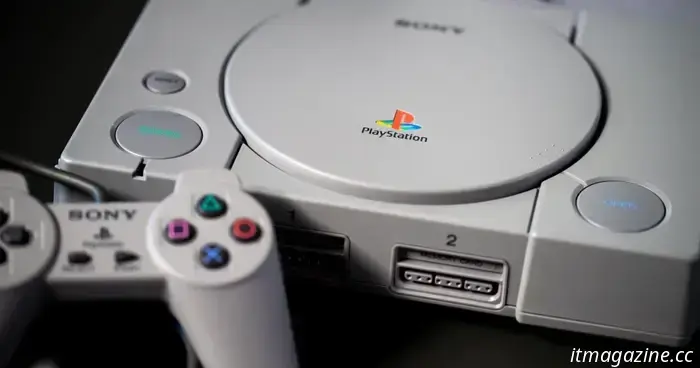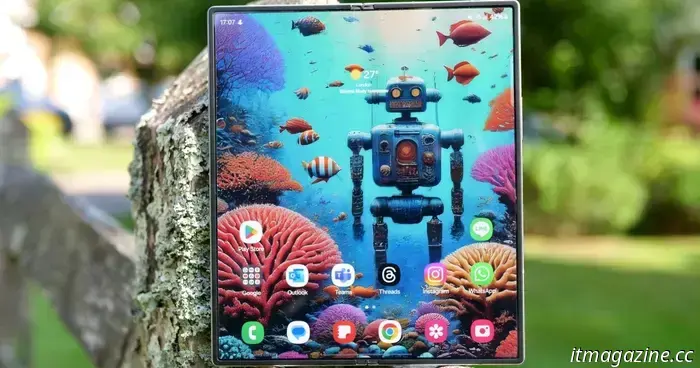
Ranking all PlayStation consoles.
The origins of PlayStation stem from a failed partnership with Nintendo. In brief, Sony intended to create a disc-based console for Nintendo, but at the last moment, Nintendo withdrew from the agreement and opted to work with Phillips instead. Following this setback, Sony launched the PS1, and the rest is history. Today, we are enjoying the finest PS5 games, with both new and classic PlayStation franchises contributing to the console's continued popularity. However, which of Sony’s consoles made the most significant impact on the gaming industry? Evaluating a console requires considering more than just great games, and the findings are by no means definitive. Based on cultural influence, reception, and nostalgia, here’s a ranking of all PlayStation consoles from least to most impactful.
7. PSP
The first PlayStation handheld faced a challenging market. Since the late ‘80s, Nintendo had dominated the handheld landscape with the Game Boy, and the PSP was also up against the DS. This experience demonstrated that having superior hardware and graphics wasn't sufficient for a system's success. From a technical standpoint, the PSP was impressive, delivering nearly PS2-level power in a portable format. However, its controls lacked dual analog sticks, which made many games a bit cumbersome, although those designed specifically for it performed well. The primary drawback was the absence of a standout title; while the PSP had numerous great games, there was nothing compelling enough to make the system essential.
6. PS3
The PS3’s launch is notorious, especially marked by its infamous $599 price tag, which immediately derailed the positive momentum from the PS2 era. Beyond the cost, the PS3 faced several significant challenges. The launch controller felt low-quality, with underwhelming triggers and the removal of rumble in favor of ineffective motion controls. The cell processor was another major setback, as it proved difficult to develop games for, even among Sony’s own studios, resulting in most multi-platform games performing worse on the PS3. Despite receiving credit for reviving its generation through a price reduction and strong final releases, many ultimately perceive this system as Sony’s greatest misstep.
5. PS Vita
The Vita arrived at a time when the market was not prepared for it. In theory, it should have been the ideal handheld. It addressed all the criticisms of the PSP by introducing a second analog stick, enabling PSN access, improving graphics, and offering many excellent games. Many Vita titles even had cross-buy options with PS3, a rarity in gaming. While it did introduce some touch-control features, they did not detract from games that opted out of using them. The primary reason the Vita struggled to capture a substantial audience—despite being more powerful than the 3DS—was Nintendo’s stronghold on the market.
4. PS4
After the missteps of the PS3, Sony could not afford to falter again. The PS4 represented a conservative but essential return to form for the company, refocusing on what had led to its turnaround during the PS3 era: exclusives. The PS4 has one of the most impressive libraries in PlayStation history, showcasing both well-established franchises like Ratchet, Uncharted, and God of War, and new hits like Horizon and Ghost of Tsushima. The PS4 also embraced creativity by releasing many experimental games, and Sony made a significant investment in PSVR. While it didn't revolutionize the industry, it became the best-selling VR unit at the time and offered many exciting experiences.
3. PS1
It’s difficult to separate nostalgia from the PS1's significant impact, but perhaps we don’t need to. This console marked the debut of the PlayStation brand, starting from scratch in competition with industry giants Sega and Nintendo. Due to Nintendo's choice to stick with cartridges for the N64, PlayStation games benefitted from superior visuals and audio, making them the best on the market outside of Nintendo’s exclusive titles. Iconic games like Final Fantasy 7, Metal Gear Solid, and Tomb Raider found their home on the PS1, which unleashed a wave of games across numerous genres due to the flexibility provided by CDs. In terms of hardware, the PS1 laid the foundation for modern controllers and served as a CD player.
2. PS5
Initially, we considered ranking the PS5 lower because it seemed like merely an upgraded PS4. However, that perspective feels misleading. Beyond enhanced graphics, the standout feature of the PS5 is its SSD, which has drastically reduced loading times to the point where we find it hard to imagine going back. Although game releases are slower, the library may not match the PS4’s strength by the end of its cycle, but it does offer compatibility with all PS4 games. Moreover, with PS Plus, players can access a broad range of PS1, PS2, PS3, PSP, and VR titles. With the added capability of streaming games to consoles, phones, or PlayStation Portal, the







Other articles
 Samsung One UI 7 has officially started rolling out to Galaxy Z Fold 6 and Flip 6 devices.
Samsung One UI 7 has officially started rolling out to Galaxy Z Fold 6 and Flip 6 devices.
Samsung One UI 7 has officially started rolling out to Galaxy Z Fold 6 and Flip 6 devices.
Samsung One UI 7 has officially started rolling out to Galaxy Z Fold 6 and Flip 6 devices.
 The Kia EV9 and EV6 are now completely eligible for the $7,500 tax credit, with the exception of one trim.
Kia's top-selling EV6 and EV9 models are now entirely manufactured in the U.S., allowing them to be eligible for the $7,500 tax credit. However, the GT trims for both models do not qualify.
The Kia EV9 and EV6 are now completely eligible for the $7,500 tax credit, with the exception of one trim.
Kia's top-selling EV6 and EV9 models are now entirely manufactured in the U.S., allowing them to be eligible for the $7,500 tax credit. However, the GT trims for both models do not qualify.
 Dreo introduces new smart home gadgets to assist you in overcoming the summer heat.
Dreo unveiled several new smart home gadgets, all aimed at enhancing your comfort this summer.
Dreo introduces new smart home gadgets to assist you in overcoming the summer heat.
Dreo unveiled several new smart home gadgets, all aimed at enhancing your comfort this summer.
 James Webb monitors the events that occur when a planet is engulfed by a star.
A planet was consumed by its star, as explored by James Webb.
James Webb monitors the events that occur when a planet is engulfed by a star.
A planet was consumed by its star, as explored by James Webb.
 Rematch is a FIFA rival developed by the creators of Sifu.
Rematch, the upcoming game from the creators of Sifu, is now open for preorder and beta registration.
Rematch is a FIFA rival developed by the creators of Sifu.
Rematch, the upcoming game from the creators of Sifu, is now open for preorder and beta registration.
 It's confirmed: Mike Flanagan's Carrie TV series has been given the green light by Amazon.
One of Stephen King's most renowned adaptations is making its way to Amazon. The Carrie TV series, directed by Mike Flanagan, has now been officially announced for Prime Video.
It's confirmed: Mike Flanagan's Carrie TV series has been given the green light by Amazon.
One of Stephen King's most renowned adaptations is making its way to Amazon. The Carrie TV series, directed by Mike Flanagan, has now been officially announced for Prime Video.
Ranking all PlayStation consoles.
PlayStation offers five home consoles, two handheld systems, and two virtual reality devices. We have ranked all of them to determine which PlayStation console stands out as the best.
